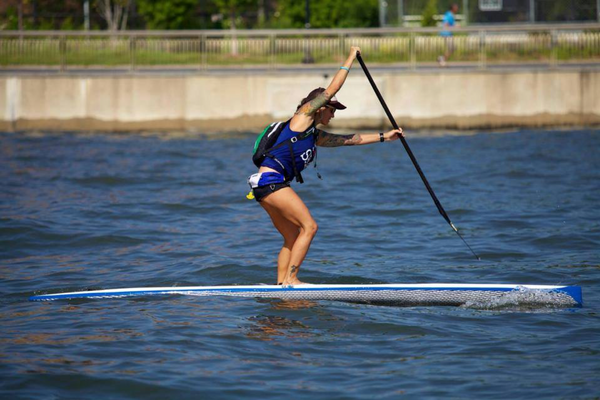
How to Train for a SUP Race
Embarking on the exhilarating path of Stand Up Paddle Board (SUP) racing is a challenge that comes with its own set of thrills and demands. With the resurgence of SUP races post-pandemic, many enthusiasts are eager to elevate their paddling skills to a competitive level. Drawing from the expertise of Roch Frey, a luminary in SUP race training, we unfold a comprehensive training guide to propel you to your racing goals.

1. Balance Intensity with Volume
Training effectively requires a delicate balance between the volume of your workouts and their intensity. Your training should mirror the demands of your target race, blending endurance with bursts of speed to condition your body for the specific challenges of the course.
2. Precision in Training Focus
Not all workouts are created equal, and overexertion can be as detrimental as undertraining. Tailor your sessions to enhance the physiological systems most relevant to SUP racing, ensuring that each stroke propels you closer to peak performance.
3. The Crucial Role of Recovery
Recovery isn’t just a break; it’s an integral part of your training where growth and adaptation occur. Personalize your work-to-rest ratio to optimize recovery, ensuring your body fully assimilates the benefits of each session.
4. Progressive Overload
Adopt a progressive approach to your training intensity and volume, gradually increasing the challenge to avoid plateaus. Incorporate lighter weeks every third or fourth week to allow your body to adapt and strengthen.
5. Embrace Variety
Monotony is the enemy of progress. Varying your training routine challenges your body in new ways, fostering improvements and keeping both mind and body engaged.
6. Strategic High-Intensity Training
High-Intensity Interval Training (HIIT) and Tabata workouts, pivotal for enhancing speed and endurance, should be spaced adequately. Allow at least 48 hours of rest between these intense sessions, supplementing your regimen with longer, more relaxed paddles.
7. Cycle and Recover
Structure your training into cycles, each culminating in a lighter week for recovery. This cyclic approach ensures consistent, injury-free progress by allowing time for physical and mental recuperation.
8. Condition for Race Conditions
Familiarize yourself with the race environment and tailor your training accordingly. Practice in conditions that simulate the race to hone your skills against chop, currents, and other potential challenges.
9. Nutritional Vigilance
Nutrition is the cornerstone of effective training, providing the energy and resources needed for recovery and growth. Focus on clean, whole foods, and adjust your caloric intake to match your training demands.
10. Plan and Prioritize
A structured training schedule maximizes the efficiency and effectiveness of your preparation. Dedicate time weekly to plan your sessions, setting clear goals and aligning them with your broader racing ambitions.

Conclusion:
By adhering to these principles inspired by Roch Frey, you're setting a course for success in SUP racing. The journey to the starting line is as rewarding as the race itself, filled with personal growth, physical improvement, and a deepening connection to the water. Embrace the challenge, and let your training journey begin.
Related Topics
Experience Paddle Boarding with Kids
Tips to Ride Your Paddle Board on a Windy Day
How Can You Do Fishing on a Paddle Board (For Beginners)?


